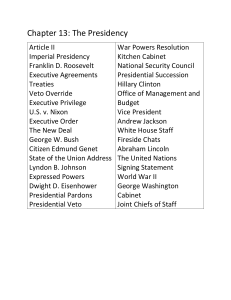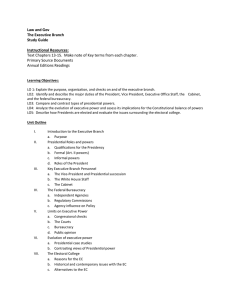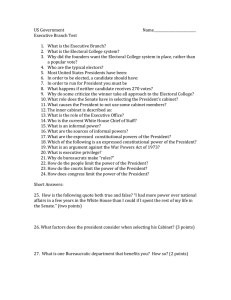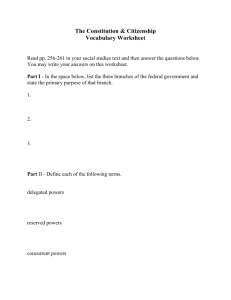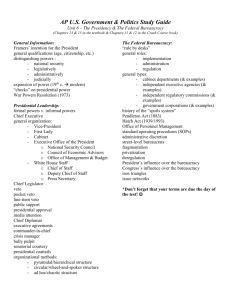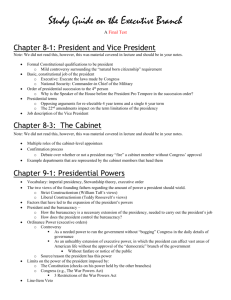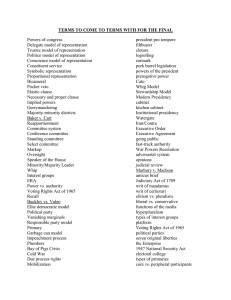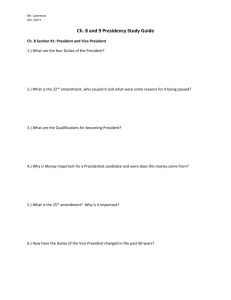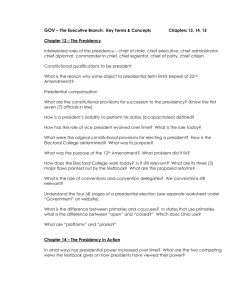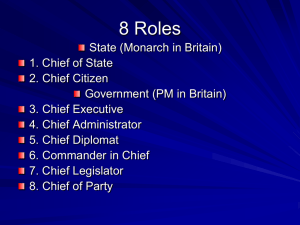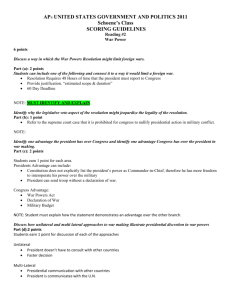THE EXECUTIVE BRANCH
advertisement
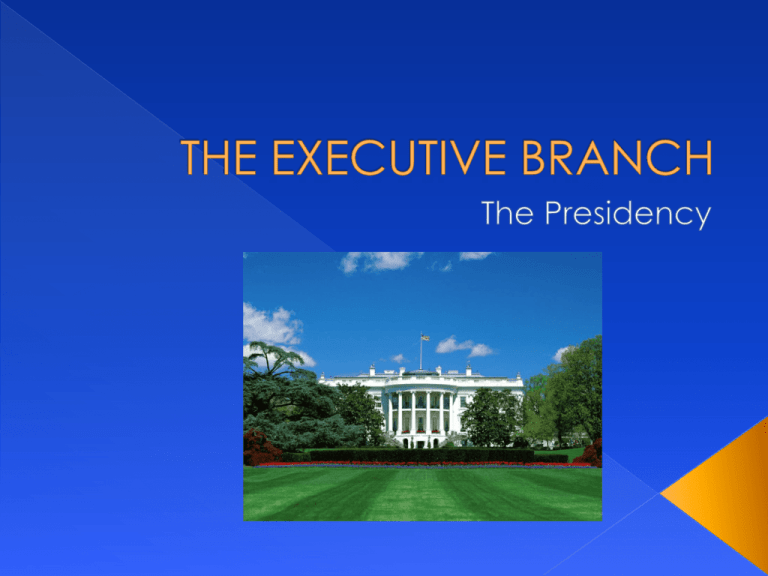
The delegates to the Constitutional Convention were wary of unchecked power. The Articles of Confederation had failed, in part because of the lack of a strong executive. Delegates to the Constitutional Convention did not want a king; they wanted the power to rest with the people. The Powers of the President are listed in Article II, Section 2 of the Constitution and include the power to: Act as administrative head of the nation. Serve as commander in chief of the military Convene Congress. Veto legislation (but Congress can override a veto.) Appoint top officials, subject to the advice and consent of the Senate. Make treaties subject to Senate approval. Grant pardons. Presidential power has expanded under the idea of “inherent powers.” Presidential powers are also determined by the political skills of the individual president. Must be a natural-born citizen, a resident for at least 14 consecutive years and 35 years or older. May serve two, four-year terms or 10 years. Earns a $400,000 salary and has a $50,000 expense account Is succeeded by the Vice President of the United States if he (or she) dies, resigns or is removed from office (25th Amendment.) The House of Representatives may impeach the president for “Treason, Bribery or other High Crimes and Misdemeanors.” Presidential primaries (Iowa, New Hampshire, Super Tuesday, etc.) National Conventions - keynote address, platform, speakers Presidential Campaign and Election Electoral College – Electors are chosen by popular vote. Most states have a winnertake-all system. Congress would decide the winner if no one wins a majority. A minimum of 270 electoral votes are needed to win. Chief of State Chief Executive Chief Diplomat Commander in Chief Chief Legislator Chief of Party Chief Citizen Congressional Checks: override, powers of the purse, impeachment, approval over appointments, legislation limiting powers (War Powers Act) Judicial Checks Political checks – public opinion, media attention, popularity The Executive Office of the President includes the Office of Management and Budget (OMB), the Council of Economic Advisers and the National Security Council The President’s Cabinet includes the heads of the major departments in the executive branch and is not used as a decision-making body today. “The tradition of the Cabinet dates back to the beginnings of the Presidency itself. Established in Article II, Section 2, of the Constitution, the Cabinet's role is to advise the President on any subject he may require relating to the duties of each member's respective office.” “The Cabinet includes the Vice President and the heads of 15 executive departments — the Secretaries of Agriculture, Commerce, Defense, Education, Energy, Health and Human Services, Homeland Security, Housing and Urban Development, Interior, Labor, State, Transportation, Treasury, and Veterans Affairs, as well as the Attorney General.” source: www.whitehouse.gov http://www.whitehouse.gov/administration/cabinet

